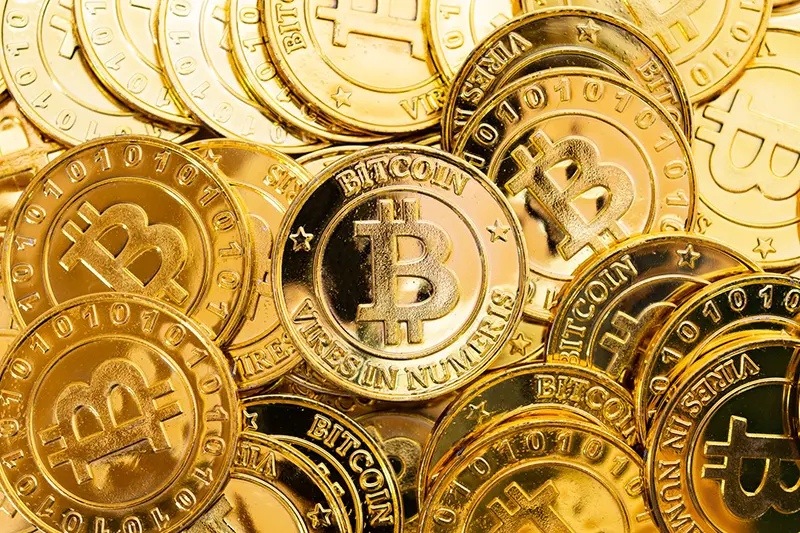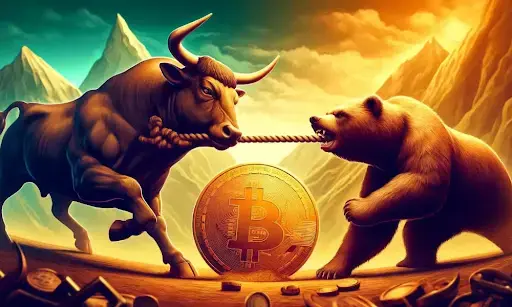In the midst of strategizing, we decide the outcome from thousands of miles away. Hello everyone, I am Lin Chao, a global financial market observer, focusing on cryptocurrency market analysis, bringing you the most in-depth trading information analysis and technical teaching.

Since the end of last year, Powell has been continuously signaling the possibility of interest rate cuts, officially starting the rate-cutting cycle. Today, Lin Chao will discuss from a relatively professional perspective the reasons for the Federal Reserve's interest rate cuts, the extent, duration, market impact, as well as possible responses from other countries' central banks and how much profit can still be made in the cryptocurrency market during the rate-cutting cycle.
To understand the Federal Reserve's decision-making logic, we need to start with its dual objectives: maintaining price stability and achieving full employment. Interest rates are the main tool the Federal Reserve uses to achieve these two goals. Lowering interest rates usually stimulates the economy, raises inflation levels, and reduces unemployment; raising interest rates is used to curb inflation but may increase unemployment. The most challenging situation is "stagflation," where high inflation coexists with high unemployment, making policy choices exceptionally difficult. In contrast, central banks in Europe, the UK, and Japan primarily focus on controlling inflation as a single goal, while the Federal Reserve seeks a balance between the two.
The market generally expects the Federal Reserve to advance its policy with a "slow rate hike, fast rate cut" approach. Gradual rate hikes allow the market more time to adapt, while rapid rate cuts can effectively stimulate credit and investment, avoiding the suppression of current economic vitality due to expectations of continuously declining rates. However, the pace of rate cuts still needs to be gradual to avoid sending panic signals to the market. In addition to the two core indicators of prices and employment, the Federal Reserve also considers other factors in its actual decision-making, such as stock market performance, political background, and the trend of the dollar exchange rate. Significant fluctuations in the stock market, especially sharp declines, may prompt the Federal Reserve to increase stimulus efforts.

In recent years, the Federal Reserve has increasingly emphasized "expectation management," striving for predictable policies and stable trends. This "boring" approach is precisely what the market welcomes, as certainty helps reduce financial risks. From Greenspan to Powell, the Federal Reserve's style has become increasingly prudent, with each policy adjustment closely aligning with market expectations. Although the Trump administration is putting significant pressure on Powell, and with the upcoming change in leadership next year, it has not changed the economic functions of the Federal Reserve.
Theoretically, interest rate cuts are usually beneficial for risk assets: U.S. stocks, U.S. bonds, and stock markets in other countries and regions are expected to rise, the depreciation of the dollar drives the appreciation of non-dollar currencies, and the prices of gold, oil, commodities, and cryptocurrencies rise, while the real estate market sees a rebound in demand, and the renminbi may also appreciate. However, historical data shows that actual market performance often deviates from theory due to special events.
Since 1980, the Federal Reserve has experienced six major interest rate cut cycles, during which the dollar exchange rate fell in three cycles and rose in the other three—mainly occurring during the Latin American debt crisis, the subprime mortgage crisis, and the COVID-19 pandemic, where risk aversion during crises boosted demand for the dollar. Similarly, global stock markets do not always rise during rate-cutting cycles; if accompanied by economic recession or financial crises, financial markets may instead decline. Gold has generally risen during most rate-cutting cycles, mainly due to its safe-haven properties; oil prices often come under pressure due to expectations of economic recession, while the cryptocurrency market, although considered a high-risk asset, is continuously increasing its safe-haven attributes.

Lin Chao's Summary
Lin Chao believes that simply discussing the impact of interest rate cuts on the market must be combined with whether an economic recession or other crisis events occur. Currently, many analyses suggest that the U.S. economy is likely to achieve a "soft landing," meaning it can return to normal without triggering a recession. However, if risks such as trade frictions, geopolitical conflicts, or recurring inflation arise, the market may still experience significant volatility.
From a longer-term perspective, the Federal Reserve's interest rate cuts usually lead to global liquidity excess, with cheap dollars flowing worldwide in search of higher return investment opportunities, often creating asset bubbles or bull markets in certain regions, such as the Latin American debt crisis in the 1980s, the Japanese economic bubble in the 1990s, the Asian financial crisis, the U.S. real estate bubble, and the recent bull market in U.S. stocks. These phenomena are the result of cross-border capital flows and interest rate differential trading. During this round of the rate-cutting cycle, the price of Bitcoin has risen from $54,000 in September 2024 to a peak of $124,000. Ethereum's price has also broken its historical high, even before this year's rate cuts were announced. By analogy, by the end of the entire rate-cutting cycle, the market capitalization of the cryptocurrency sector should approach over $10 trillion. It must be acknowledged that there are indeed many bubbles, but any bull market in any industry will also be accompanied by bubbles. The real concern for everyone is how to obtain considerable profits before the bubble bursts and how to exit before the bubble collapses.

Based on the current market index, it is still too early to say that the bull market has ended. In fact, Lin Chao has always emphasized trend trading. Since we acknowledge that we are currently in a bull market, to profit, we must adhere to the principle of being vaguely correct, without getting too caught up in precise indices. Each pullback can be seen as an entry opportunity, and we should maintain sufficient patience, looking at profit returns as the cycle nears its end. In the spot market, I recommend that everyone continue to pay attention to SOL, ADA, TRX, and XRP, which are the top 10 major altcoins by market capitalization. After the short-term pullback in August, there will be another wave of high-profile increases in September and October. Prepare in advance, do not be influenced by short-term market sentiment, and do not chase highs.
In summary, the Federal Reserve's interest rate cuts are not only a domestic policy adjustment in the U.S. but also an important event affecting global capital flows and market sentiment. Although there are many theoretical expectations, the actual impact must be comprehensively judged in conjunction with whether the economy achieves a soft landing, whether there are sudden crises, and the policy interactions in other regions. This is why we need to constantly pay attention to market trends.

If you are feeling lost—unable to understand technology, unsure how to read the market, not knowing when to enter, unable to set stop-losses, not understanding take-profit strategies, randomly increasing positions, getting stuck while trying to bottom out, unable to hold onto profits, missing market opportunities… these are common issues for retail investors. Lin Chao can help you establish the correct trading mindset. A single profitable trade is worth more than a thousand words, and finding the right direction is better than repeatedly facing defeats. Instead of frequent operations, it is better to strike precisely, making each trade more valuable.
The success of investment depends not only on choosing good targets but also on when to buy and sell. Protecting your principal and making good asset allocations are essential for steady progress in the ocean of investment. Life is like a long river flowing into the sea; what determines victory or defeat is never just the gains and losses of a single pass or moment, but rather planning before action and knowing when to stop to gain.
The global market is ever-changing, and the world is a whole. Follow Lin Chao to gain a top-tier global financial perspective.
This article is merely a personal opinion and does not constitute any trading advice. The cryptocurrency market carries risks; invest cautiously!

For real-time consultation, feel free to follow the public account: Lin Chao on Cryptocurrency.
免责声明:本文章仅代表作者个人观点,不代表本平台的立场和观点。本文章仅供信息分享,不构成对任何人的任何投资建议。用户与作者之间的任何争议,与本平台无关。如网页中刊载的文章或图片涉及侵权,请提供相关的权利证明和身份证明发送邮件到support@aicoin.com,本平台相关工作人员将会进行核查。




